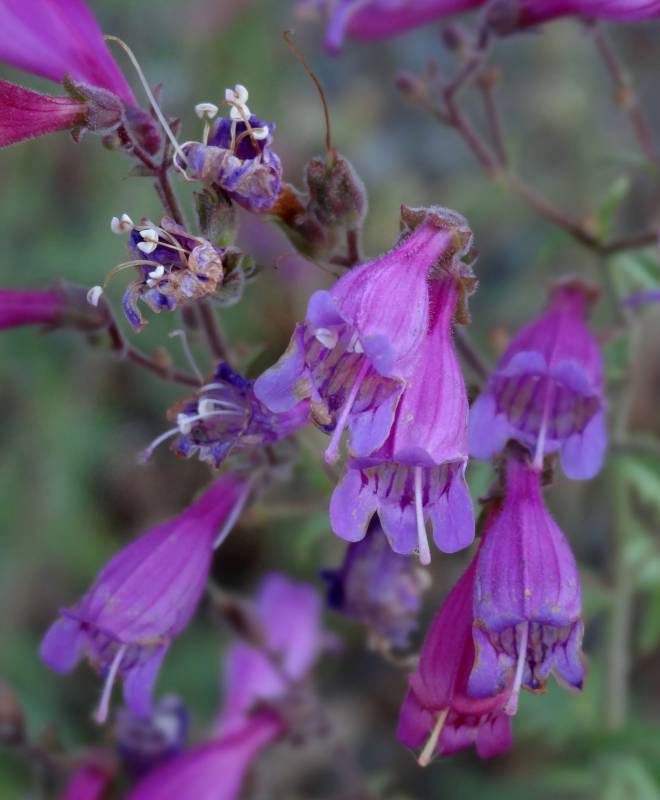Penstemon richardsonii
Penstemon gairdneri
Richardson's penstemon
gairdner's penstemon
Leaves opposite, all cauline, the lower reduced and short-petiolate, the others sessile, sharply serrate-dentate to irregularly pinnatifid, up to 7 cm. long and 3 cm. wide.
Leaves numerous, opposite to alternate, or irregularly scattered, entire, linear, seldom over 3 mm. wide.
Inflorescence a terminal panicle, leafy-bracteate below;
calyx 4-8 mm. long, the 5 segments green or purplish, mostly entire, often unequal;
corolla bright lavender to purplish-red, glandular-hairy outside, mostly glabrous within, 22-32 mm. long, over 1 cm. wide at the mouth, strongly bilabiate, the upper lip cleft nearly half its length;
anthers 1.3-1.7 mm. long, permanently horseshoe shaped, the pollen sacs saccate and indehiscent below;
staminode shortly exerted, long-bearded toward the tip, or glabrous.
Inflorescence of several few-flowered verticillasters;
calyx 3.5-8 mm. long, the 5 segments broadly lanceolate, entire;
corolla blue-purple or lavender, or occasionally bright rose-purple, 14-22 mm. long, somewhat glandular-hairy externally and internally near the mouth, the tube flared, the limb spreading;
pollen sacs glabrous, ovate, 0.8-1.2 mm. long, becoming opposite;
staminode bearded toward the tip.
Capsule 5-8 mm. long
Capsule 6-8 mm. long.



